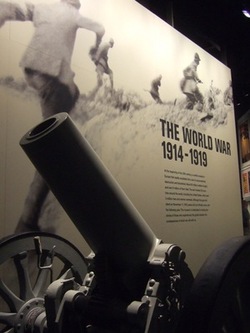words + photos by Tom Adkinson
As a kid growing up in the early baby boom years, I could understand World War II because it was familiar to me. The stories were all around me.
 A friend’s father down the street had a Japanese carbine.Guadalcanal Diary was an exciting read, as was Thirty Seconds Over Tokyo. Movies such as “The Sands of Iwo Jima” and “The Longest Day” (which seemed to star every major actor in Hollywood, including John Wayne, Richard Burton and Sean Connery) filled the movie screens.
A friend’s father down the street had a Japanese carbine.Guadalcanal Diary was an exciting read, as was Thirty Seconds Over Tokyo. Movies such as “The Sands of Iwo Jima” and “The Longest Day” (which seemed to star every major actor in Hollywood, including John Wayne, Richard Burton and Sean Connery) filled the movie screens.
It was World War I, the one known as “The Great War,” that didn’t make much sense. It was long ago and complicated, a jumble of combatants that were difficult to sort out. It seemed to lack the drama of Midway or Normandy or the Flying Tigers.
That ended with a single museum visit in an unlikely place – Kansas City, Missouri – where I began to make sense of it all.
Kansas City is the home of the National World War I Museum, and the enormity and pathos of that horrible time hit me as soon as I entered.
Once inside, I stood on a glass bridge that leads to the major exhibit areas. Beneath my feet and through the glass was a field of poppies, 9,000 of them. It was an attractive and appealing art installation until I read that each of the red poppies represented 100,000 lives. More precisely, each poppy represented 100,000 deaths. That beautiful field of poppies was a statement about the nine million combat deaths of World War I.
Downtown Kansas City is a pleasant place with big office buildings, hotels, sports facilities, restaurants and the like, and the National World War I Museum is one of its landmarks.